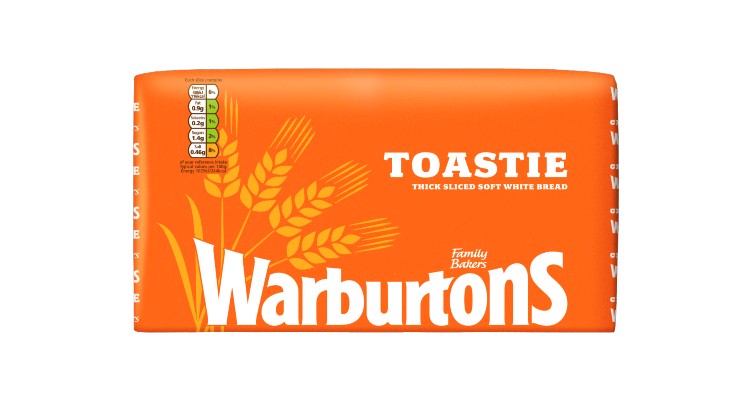The pandemic saw many shoppers switch to their local stores to stock up on everyday essentials – especially bread and bakery products, as more people ate lunch and dinner at home.
Carl Pickett, category development controller at Warburtons, says: “In-home consumption became more important throughout the pandemic, with lunch being the clear winner and bakery products continuing to be at the heart of many of these occasions.”
While we seem to have returned to a normal, albeit mask-wearing way of life, many shoppers have kept the shopping habits developed over lockdown and flexible home-working has become more popular, meaning the trends that affected the bread and bakery category are set to continue.
White revival
Pickett says everyday loaves such as white, wholemeal and half-and-half still have an important role to play within the bread category. This is echoed by Dan Beck, head of category planning and activation at Roberts Bakery, who says there was significant growth in white bread sales during the pandemic – a segment that has been in decline for many years.
He says: “In this new post-pandemic period, we are now seeing people moving back to normality, so buying more bread with seeds or grains (up 3% versus last year) and half-and-half (up 0.2%), with white remaining the dominant bread type in the market with more than half of all sales.” The trend for buying healthier breads is also set to continue, as Beck says the pandemic has heightened awareness of healthy eating among consumers.
“The baking industry has always looked to provide healthier alternatives, but Covid-19 has heightened awareness of health needs among consumers, with a particular focus around immunity and vitamin D. Our Ultimate Fibre wholemeal put fibre and its value firmly at the heart of the proposition, providing the highest amount of fibre per slice versus other leading brands.
“Our recently launched Vit Hit loaf with added vitamin D, a variant of our best-selling Medium and Thick White Sliced loaf, was all about taste without compromise – good-for-you everyday bread with the built-in health benefits that consumers want.”
Sandwich alternatives
Despite sliced bread growing by 2% over the past year, which Paul Baker, founder of St Pierre Group, says is fuelled by an increase in sandwiches being made, the bread category has seen many shoppers switch to different bread formats.
Within the impulse channel, Pickett at Warburtons says sandwich alternatives are growing by 22% year on year, a segment that includes bagels, pittas and wrapped rolls. Baker says bagels in particular have become a recognised part of the UK bakery repertoire and the format is in 12% growth.
While the bread category has blossomed, the same cannot be said for in-store bakery products. Hannah Morter, manager of customer insight and category management at Country Choice, says that despite a surge in footfall, in-store bakery suffered as retailers prioritised categories that were in demand.
She says recent data suggests shoppers have returned to their usual shopping habits, moving back to categories that were strong in the pre-pandemic era, while ‘treat’ categories are set to recover too.
Sweet bakery
John Want, sales, marketing and research and development director at Rich’s, says sweet bakery has performed well this year and sales are expected to be strong in the months ahead, especially in local convenience stores.
Kate Sykes, marketing manager at Lantmännen Unibake, says 84% of retailers that sell sweet bakery goods agree that French and Danish pastries are crucial for driving sales. In fact, she says, Danish pastries deliver 62% of total pastry sales.
While breakfast is often considered the most appropriate time to buy sweet pastries, Sykes says 57% of adults say they eat Danish pastries as a treat between meals, so “retailers would do well to make them available for shoppers to choose at any time of day”.
Want says cookies and muffins are both in growth due to the popularity of multi-pack formats. “We’ve seen an increase in sales of chocolate cookies in the last year, with more people looking for indulgent flavours to treat themselves. Muffins have proved resilient with increased shopper numbers throughout the year. Most of the acceleration in retail muffins is coming from small-pack formats of quality serves.”
Morter at Country Choice says sales of indulgent items actually tend to grow during times of hardship, as they are affordable treats. She claims: “It is likely that with restrictions remaining on foreign travel for much of this summer, British shoppers will be looking for little luxuries to treat themselves and so sales of premium bread and bakery should be buoyant.”
By Éilis Cronin, Content Editor
 Talking Retail Grocery and product news for independent retailers
Talking Retail Grocery and product news for independent retailers






